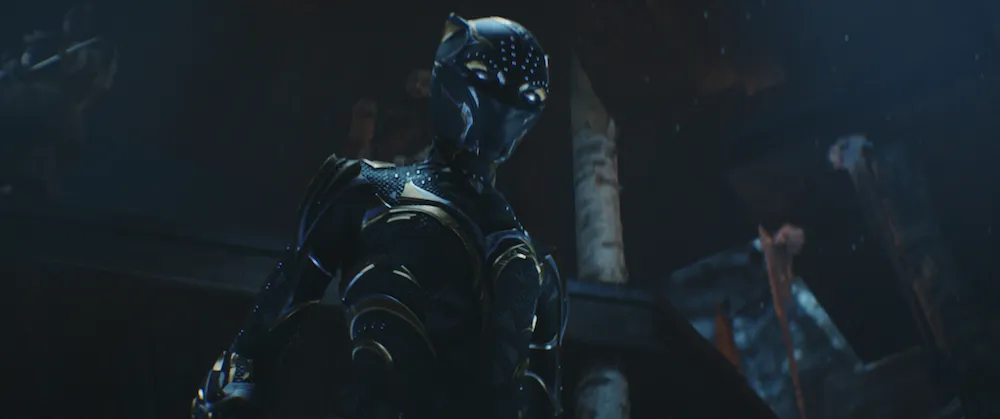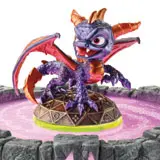 Skylanders: Spyro’s Adventure is one of the most expensive new video games available this holiday season to play it to true completion. It’s also one of the most deceptively addictive and fun whether you’re age 6 or 60.
Skylanders: Spyro’s Adventure is one of the most expensive new video games available this holiday season to play it to true completion. It’s also one of the most deceptively addictive and fun whether you’re age 6 or 60.
The “gimmick” of Skylanders is the use of small toy statues to store character levels, attributes, money, accolades, name customizations, and collectibles such as hats. By placing a Skylander toy on the Portal of Power, included with the game, that character and all of their saved data will suddenly appear in the game. Just don’t drop them on tile as I did or they’ll come apart. The actual piece that makes the toy “work” can’t break without being ripped, so thankfully I was able to glue my Skylander back together and he still works like a charm.
Taking this concept a step further, Skylanders developers Toys for Bob, XPEC, Vicarious Visions, and Frima have made the toy statues compatible with the game across platforms. Character attributes saved to the Spyro toy can be taken from the Xbox 360 version to the Nintendo 3DS version, and vice versa. The character data can even be taken to an online version of the game (with the exception of the 3DS version) via a unique code.
There are three different ways to evaluate this video game and toy mishmash design concept, and all come out with an easy passing grade. The first is through the eyes of a child that widen as the Portal of Power LEDs activate when the gaming console is turned on. Once the game is accessed, the LEDS not only light up, but they subtly change colors. Kids, especially those under 10, are easily hooked on this novelty alone.
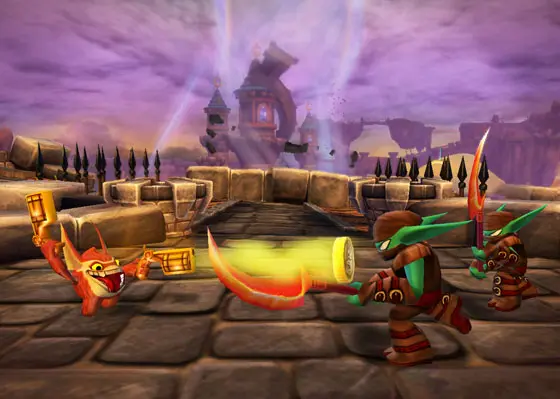
Once Skylanders is underway, the Portal of Power keeps on giving by allowing kids to swap out characters on the fly. If Gill Grunt becomes boring for reasons only a child would understand, Trigger Happy can be swapped in. Then if Trigger Happy no longer brings happiness, Spyro and his fire breath can step up to the plate.
Gameplay is simple enough that even novice child gamers can pick up and play with relative ease, and slow-appearing text accompanies all cut-scene dialogue. The mechanics are similar to the early Playstation 1 Spyro games where all you’re really doing is moving around and attacking enemies. There’s an upgrade that will allows Spyro to fly, but it will take several hours of gameplay to earn enough points to purchase it. A grounded Spyro is no harder to control than any other character.
The levels are fairly linear so there’s no getting lost or geographically confused, and puzzles consist of moving either large blocks or turtles, yes turtles into the proper position to build a bridge or open a path. There are four to five levels to play through before any sort of difficulty kicks in, plenty to keep the kiddies busy as they get a feel for platform gaming.
Targeting enemies and destructible objects is achieved with automatic aiming that locks in on the nearest target. Kids can spin their Skylander wildly while firing and will most likely take out all the enemies within range.
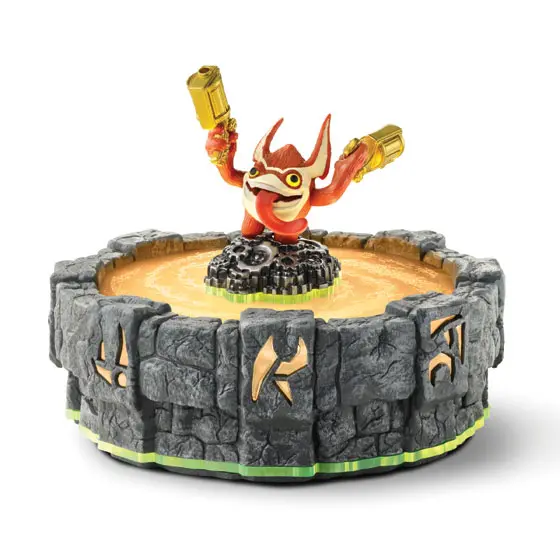
There is a design flaw that might frustrate kids once they get a knack for playing the game. The collection of gems, money and other objects that spill out of treasure chests should perform like a magnet as past Spyro games have. Walk near the items and they’ll suck into the character like a vacuum.
In Skylanders, characters have to actually touch what they’re picking up to collect it. Normally this wouldn’t be an issue, but in the many cases where a chest or breakable object is situations near a cliff edge or area a character cannot access, the goodies end up falling frustratingly just out of reach.
Adults, meanwhile, have to deal with the flip side of the auto-targeting system. The scenario that keeps coming up involves approaching an enemy with the ability to knock out 25 percent or more of one’s health with a single melee blow. They are usually across a bridge or tight path with destructible objects nearby. To get close enough to take the shot without getting too close to take a hit required results in the first several shots going at the destructible objects and not the enemy.
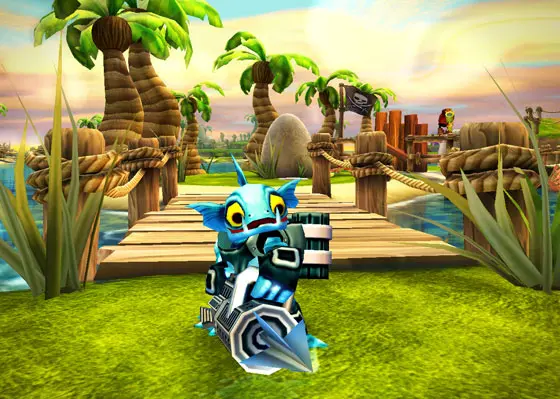
Boredom might become an issue for adults through the first few levels until the conclusion of level 4. Here the enemies start getting a little harder and a life might actually be lost. More on that in a bit.
As simple as Skylanders is to play even as the difficulty ramps up, it’s extremely addictive and, more importantly, fun for adults to partake in. Coop makes it a great husband and wife piece of entertainment, especially for bragging rights to see who can level up their character the fastest, or who will come out on top in the player-vs-player battle mode that’s situated outside the main adventure.
The voice cast do a great job adding personality to the large number of cut-scenes. I won’t spoil the names, but adults are bound to have heard them before – especially on television.
The reason I have mentioned only three Skylander characters by name is because they’re included with the base game package. There are 29 other Skylander characters available separately, each falling into one of 8 different elements (Earth, Air, Fire, Water, Life, Undead, Magic, and Tech).
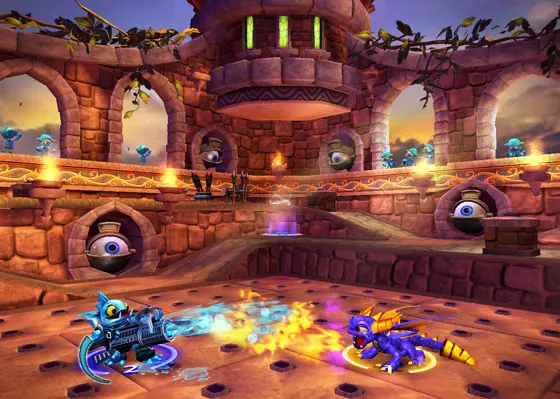
The frustration, or clever marketing play depending on how you look at it, is many of the treasure chests, collectibles and hats are hidden away in small side areas only accessible by a character that matches that area’s element. By the second chapter/level, you’re itching to run to the store and get the missing element characters at around $7 a pop.
Matching characters to areas designed for their element also boosts their attributes when they’re there. The game lets you know this verbally, too, almost as reminder that it’s time for a toy run.
If a character dies, they must “rest” while another character steps in to take over. If you only have three characters while taking on a tough boss battle then you have three lives. If you went out and bought 5 more characters then you have eight lives total. The more characters you own, the more times you’ll have to replay the game to max out each of their abilities. It’s a plot so devious that even the game’s bumbling villain Kaos would approve.
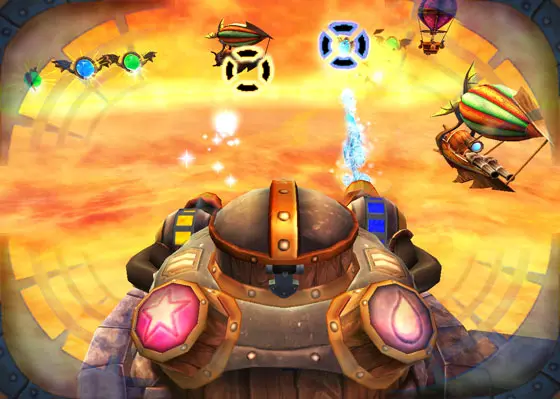
Also available separately is an “Adventure Pack” that includes a Skylander, a vehicle/setting toy, and smaller attribute toys. These are the toy versions of downloadable content, only instead of purchasing a new level and downloading it you’re getting a neat little physical representation of the new content. I’m already eying the first which includes a Pirate Ship and Shark Skylander, available in stores now. It’s nice to know Activision is already executing a plan to expand the Skylanders universe so early in its life cycle.
Saving the best for last, Skylanders is virtually made to be the perfect parent and child coop experience. It’s a little more youth-oriented than the excellent Lego Star Wars games, and even captures the quirky humor in the cut-scenes and characters. The gameplay is much simpler, too, so younger kids can play alongside mommy or daddy with minimal assistance and direction. I realize Skylanders is rated E10+, but feel it’s best geared toward the 5-8 range based on difficulty and presentation.

Skylanders is an ambitious product that will lure you into spending $100 or more just to scratch the surface of what can be collected and accomplished in the game. Buying more characters and entering the side areas is completely optional to completing the game, but I don’t see how anyone can play Skylanders and not want to own at least one Skylander for each element group.
If Skylanders can become a success this holiday season then the future is bright for the continuation of this reinvention of the Spyro brand. New games can be added without having to include the Portal of Power again, and new Adventure Packs can continue to add new characters and areas to explore. It really is a clever – and evil for one’s wallet – well executed video game and toy crossover experiment.
– Dan Bradley
Shop for Skylanders: Spyro’s Adventure and the sold separately figures at Amazon.com.

